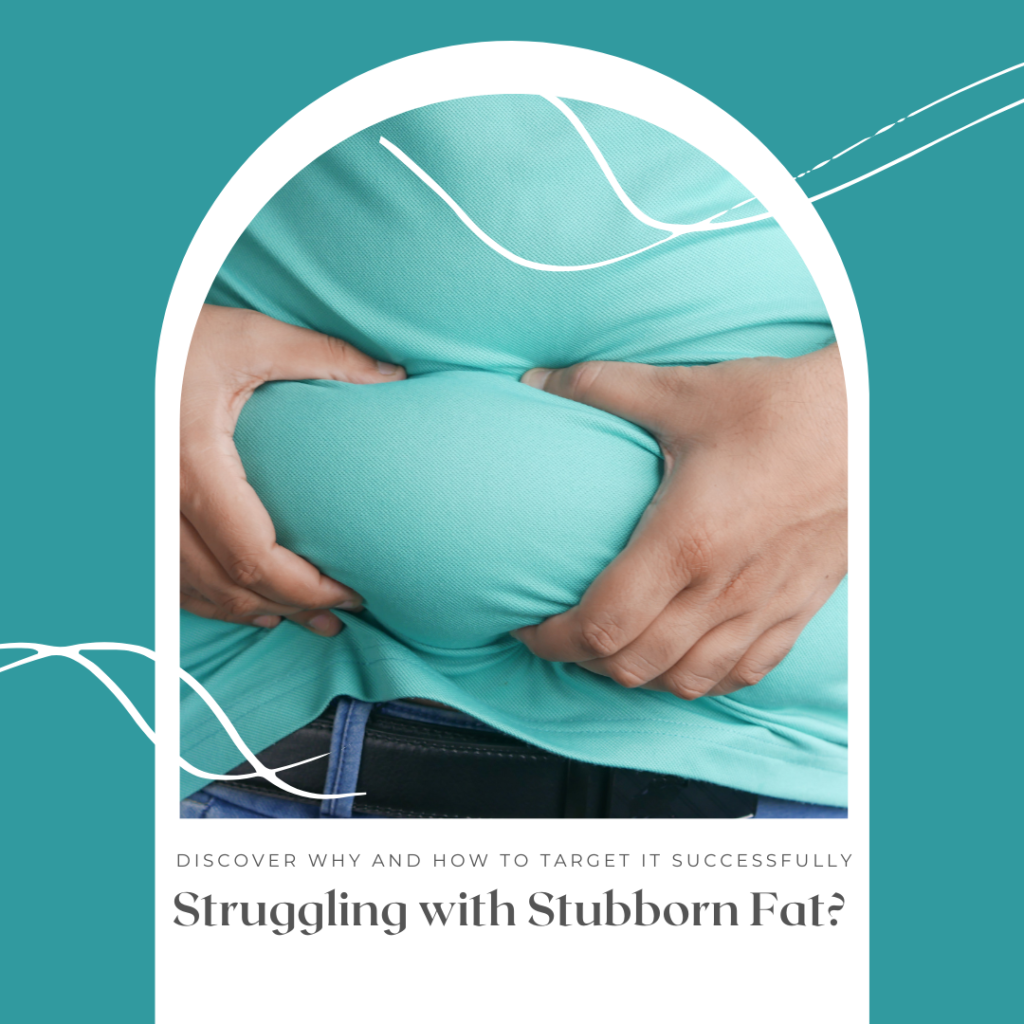Discover Why and How to Target It Successfully

Have you ever felt frustrated because your diet and workout routine aren’t delivering the results you want? If you’re struggling to shed that persistent, stubborn fat, you’re not alone. Many people face this challenge, and the issue often lies in understanding the nature of stubborn fat and how to effectively target it.
Understanding Body Fat: Visceral vs. Subcutaneous
To tackle stubborn fat, it’s crucial first to understand the different types of fat in our bodies. Fat is categorized into two main types:
- Subcutaneous Fat: This is the fat that lies directly under the skin and is often the type we can pinch. It’s what most people think of when they talk about stubborn fat. This fat accumulates in areas like the thighs, arms, and belly, and can be especially persistent.
- Visceral Fat: This is the fat that surrounds our internal organs. It’s often referred to as “TOFI” (Thin Outside Fat Inside), as people with high levels of visceral fat may appear slim but have a lot of internal fat. While this type of fat is not ideal for overall health, it is not typically considered stubborn fat.
When we overeat, most of the excess turns to fat. Then, it goes to the stores. As result, fat cells increases in number, if the individual is in his/her growing years (puberty). By the way, the number of fat cells in the body does not change when you reach the adulthood. Yet, it can increase in much slower rates. However, the SIZE of these cells mainly change.
To a great degree, our lifestyle what really impacts our fat stores and where they are distributed. You probably noticed for women, that the thighs, arms (apple shape). Whereas, men prefer storing fat in their bellies more than women. And that probably because of the stubborn fat. They are often called trouble/problem areas
But what makes these fats stubborn?!!
Why is Fat Stubborn?
The difference between visceral and subcutaneous fat goes beyond just location; it also involves how they respond to fat-burning activities. Fats have two types of receptors—alpha and beta—that interact with various hormones:
- Alpha Receptors: These are associated with slower fat loss and are prevalent in stubborn fat areas. They inhibit the release of fat from fat cells.
- Beta Receptors: These promote fat breakdown and are more effective in burning fat.
The balance between these receptors and hormones such as insulin, adrenaline, estrogen, and thyroid hormones affects how easily fat is burned or stored. For example, insulin promotes fat storage, while adrenaline helps release fat from cells.
Possible causes
In the book “Lose Weight Here: The Metabolic Secret to Target Stubborn Fat and Fix Your Problem Areas”, by Dr. Jade Teta and Dr. Keoni Teta, they said that what really makes you build all those stubborn fats is dieting. As a consequence, ruins your metabolism. When you follow a certain diet, normally (eat less and exercise more), you are actually lowering your metabolic rate (slow burning). This advice that we’ve been following for years, is putting our body in hormonal imbalances. Which in return, have an impact on hunger hormones and fat burning hormones that certainly will favor fat storage over its release.
The authors added that the first thing you need to do to lose weight in a way that you can maintain it for loooooong run is to correct your metabolism along with balancing your hormones. and of course, exercising, fasting, sleeping … All will help in losing your fat stores.
Strategies to Target Stubborn Fat
To effectively target stubborn fat, a multifaceted approach is required. Here’s how you can tackle it:
- Focus on Overall Lifestyle: Factors such as age, stress levels, and lifestyle choices impact how your body stores and burns fat. Adopting a holistic approach that includes managing stress, staying active, and making mindful lifestyle choices can enhance fat loss efforts.
- Optimize Your Diet: Excess calories lead to fat storage. To reduce stubborn fat, it’s important to create a calorie deficit but also to focus on nutrient quality. Incorporating protein-rich foods can increase fat oxidation and aid in muscle building. Protein has a higher thermic effect compared to fats and carbs, meaning it requires more energy to digest and process.
- Exercise Regularly: Combining cardiovascular exercises with strength training can help burn calories and build muscle. Increased muscle mass boosts your resting metabolic rate, leading to more effective fat burning.
- Improve Hormonal Balance: Hormonal imbalances can exacerbate fat storage. According to Dr. Jade Teta and Dr. Keoni Teta in their book Lose Weight Here, traditional dieting methods can disrupt your metabolism and hormonal balance. Correcting your metabolism and balancing your hormones can be crucial for long-term fat loss.
- Incorporate Fasting and Adequate Rest: Intermittent fasting can help manage insulin levels and promote fat burning. Additionally, adequate sleep is essential for hormonal regulation and overall fat loss.
In Conclusion,
Conquering stubborn fat involves understanding its biological nature and adopting a comprehensive approach. By optimizing your diet, exercising regularly, managing hormonal imbalances, and focusing on overall lifestyle improvements, you can successfully target and reduce stubborn fat.
Remember, achieving a leaner, healthier you is a journey that requires perseverance and consistency. Embrace a positive mindset, stay dedicated, and watch as those stubborn fat areas gradually diminish.
References:
- Rolfes, S. R., Pinna, K., & Whitney, E. (2014). Understanding normal and clinical nutrition.Cengage learning.
- Teta, J., & Teta, K. (2016). Lose Weight Here: The Metabolic Secret to Target Stubborn Fat and Fix Your Problem Areas. Rodale.

It is very difficult to stay committed and to know with all the foods out there which is really helping you. Thanks for sharing.
Really amazing info right here!
Pingback: Blood tests for weight loss - nutritiousinfo
Pingback: 5 Reliable Ways to Lose Fat - nutritiousinfo
I am currently on a weight loss journey and find this information so helpful! Thank you for sharing
so happy to hear that <3
Very useful post! I wish it could be easy to lose weight. Thank you very much for the information!
what is difficult is to keep committed and consisted, but once you are …it is easy to lose weight 😉